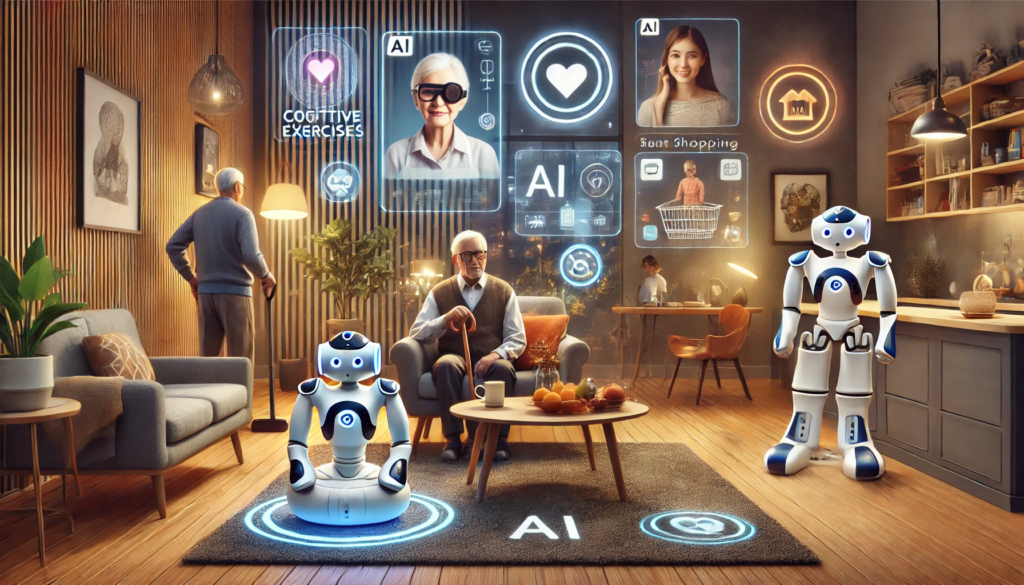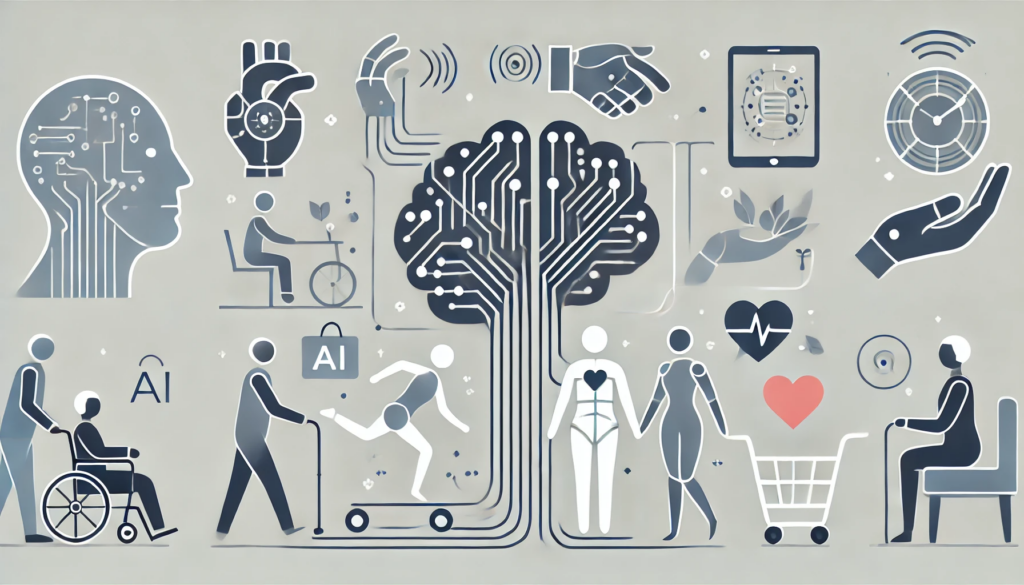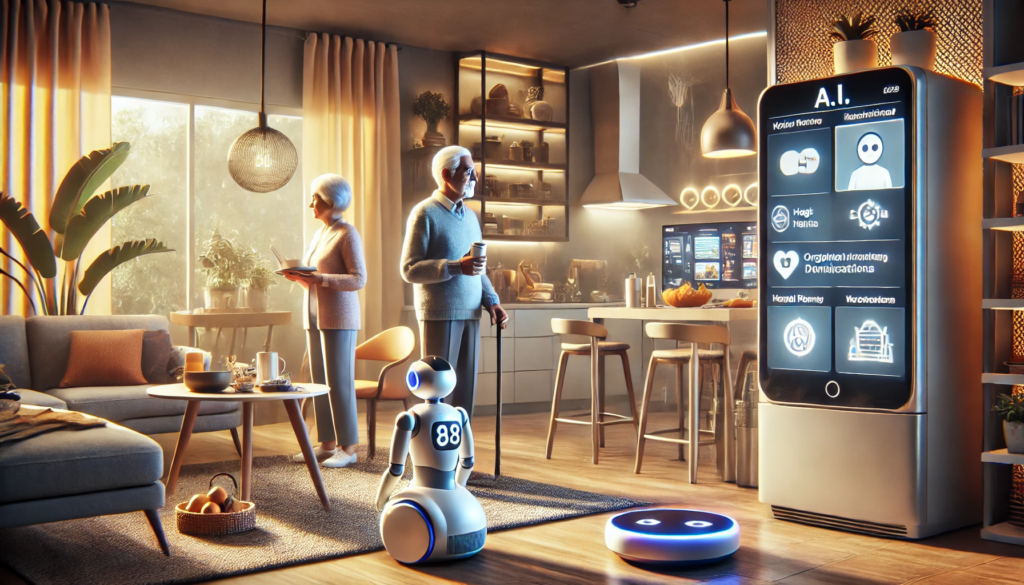
ChatGPT:
Introduction
Good afternoon, everyone! It’s a pleasure to be here with all of you today. I hope you’re all feeling well and ready to embark on a journey into the fascinating world of technology, specifically, the world of chatbots. Now, I know technology can sometimes seem overwhelming, but I assure you, by the end of our time together, you’ll see how chatbots can become friendly companions that make our daily lives easier and more enjoyable.
1. Understanding Chatbots and Their Functions
Let’s start by demystifying what a chatbot is. Simply put, a chatbot is a computer program designed to simulate conversation with human users, especially over the internet. Imagine having a conversation with someone who can answer questions, provide information, or just chat about your day—all through your computer, tablet, or smartphone.
There are different types of chatbots available today, each serving various functions:
• Information Providers: These chatbots can answer questions and provide information on a wide range of topics. For example, if you’re curious about the weather forecast, a chatbot can tell you whether to carry an umbrella tomorrow.
• Personal Assistants: Chatbots like Siri on Apple devices, Alexa on Amazon devices, or Google Assistant can help you set reminders, make phone calls, or even control smart devices in your home with just your voice.
• Customer Service Bots: Many companies use chatbots on their websites to help answer customer questions quickly. If you’ve ever typed a question into a chat box on a website and received an instant reply, you’ve interacted with a customer service chatbot.
• Health and Wellness Bots: There are chatbots designed to help monitor health, remind you to take medications, or even guide you through exercises or meditation.
• Social and Entertainment Bots: These chatbots are designed for fun. They can tell jokes, play games, or engage in light-hearted conversations to keep you entertained.
The beauty of chatbots lies in their availability. They’re there to assist 24/7, without the constraints of human schedules. They can make technology more accessible, breaking down barriers for those who might find modern devices a bit daunting.

2. Incorporating Chatbots into Daily Life
As we gracefully age, it’s natural to experience changes in our cognitive functions, physical strength, and mobility. But here’s where chatbots can step in to lend a helping hand. Let’s explore how we can incorporate chatbots into various aspects of our daily lives.
a. Enhancing Cognitive Functions
Example: Suppose you enjoy doing crossword puzzles or brain teasers to keep your mind sharp. There are chatbots designed to challenge your brain with quizzes, riddles, and games. Engaging with these bots can stimulate your mind, improve memory, and even teach you new things.
Moreover, if you’re learning a new language or picking up a new hobby, chatbots can be your personal tutor. They provide lessons at your pace, repeat information as often as you need, and are always patient.
b. Assisting with Daily Tasks
Example: Remembering appointments, medication times, or family birthdays can sometimes be a challenge. Personal assistant chatbots can set reminders for you. Simply tell the chatbot, “Remind me to take my blood pressure medication at 8 PM,” and it will alert you when it’s time.
If you have smart home devices, you can use chatbots to control them. You can say, “Turn on the living room lights,” or “Adjust the thermostat to 72 degrees,” and the chatbot will carry out the task, reducing the need to move around unnecessarily.
c. Improving Physical Well-being
Example: Physical activity is essential, but mobility issues can make exercise challenging. Chatbots can guide you through tailored exercise routines that suit your abilities. For instance, a chatbot can suggest simple chair exercises or stretches to keep you active.
For health monitoring, there are chatbots that can track your vital signs if you have connected devices like a smart blood pressure monitor or glucose meter. They can alert you or a caregiver if readings are outside normal ranges.
d. Providing Companionship
Example: Loneliness can affect our well-being. Chatbots can offer companionship by engaging in conversations. While they don’t replace human interaction, they can provide a friendly voice when you feel like chatting.
There are even specialized chatbots designed to provide emotional support. They can help you process feelings, reduce stress through relaxation techniques, or simply be a non-judgmental listener.
e. Facilitating Communication with Loved Ones
Example: Some chatbots can help you stay connected with family and friends. They can assist in sending messages, making video calls, or sharing photos. If you’re not confident with using certain apps or devices, you can ask the chatbot to help you. For example, “Help me send a birthday message to my granddaughter,” and it can guide you through the steps.
f. Simplifying Access to Information
Example: Whether you want to know the latest news, check stock prices, or find a new recipe, chatbots can fetch information quickly. Just ask, “What’s the news today?” or “Find me a recipe for chicken soup,” and the chatbot will provide the information without you needing to navigate complex websites.
g. Assisting with Shopping and Services
Example: Need to order groceries but find online shopping complicated? Chatbots can help place orders for you. You can say, “Order milk, bread, and eggs from the grocery store,” and the chatbot can handle the transaction. Similarly, if you need to book a taxi or schedule a doctor’s appointment, chatbots can simplify these tasks.
3. Optimizing the Use of Chatbots
To make the most out of chatbots, here are some tips:
• Start Simple: Begin by using chatbots for basic tasks. As you become more comfortable, you can explore more features.
• Voice Commands: If typing is difficult, use voice-enabled chatbots. Speaking your requests can be easier and more natural.
• Safety First: Be cautious with personal information. Use reputable chatbots and avoid sharing sensitive data unless it’s secure and necessary.
• Customize Settings: Adjust the chatbot’s settings to suit your preferences. You can change the voice, language, or interaction style to make it more comfortable for you.
• Seek Help When Needed: Don’t hesitate to ask a family member, friend, or caregiver to help set up and show you how to use chatbots.
Final Comments
As we navigate the journey of aging, it’s heartening to know that technology is evolving to support us. Chatbots, once seen as complex tools, are becoming more intuitive and user-friendly. They’re designed to adapt to our needs, making life a bit easier and more connected.
Embracing chatbots doesn’t mean replacing human interaction or the joy of face-to-face conversations. Instead, they serve as an additional resource—a tool we can use to enhance our daily lives, stay engaged, and maintain our independence.

